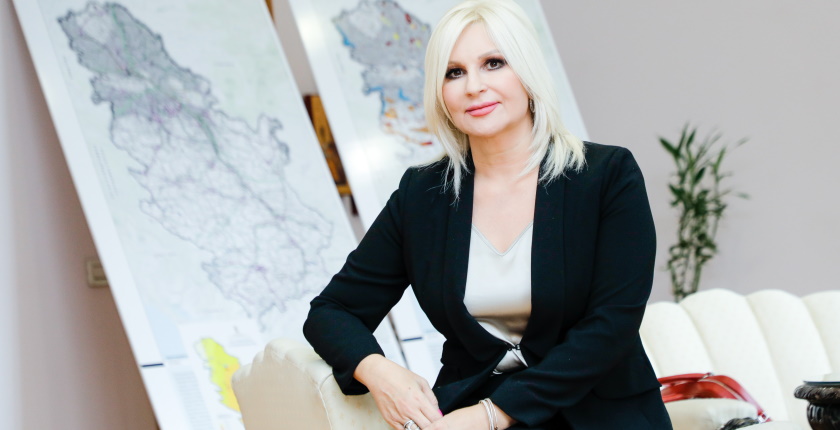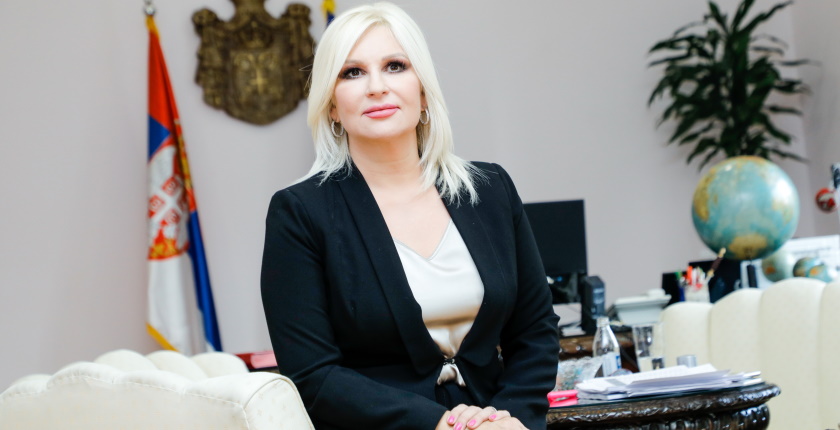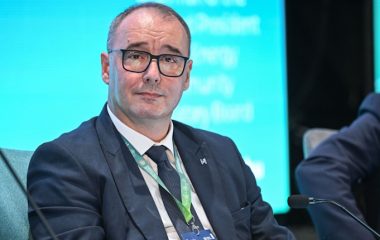
Photo: Ministry of Mining and Energy
Author: Prof. Zorana Z. Mihajlović, PhD, Deputy Prime Minister of Serbia and Minister of Mining and Energy
Events on the energy market in the last year and a half have actualized the famous maxim of energy experts that ‘energy is the most expensive when you lack it’. Besides all other processes that have intensified in the past two years, since the COVID-19 pandemic, through the fight against climate change, which is a prerequisite for future development, since the beginning of Russia’s attack on Ukraine we have a new geopolitical, and with it a new energy reality.
Notwithstanding all the measures that states are taking to provide enough energy and energy resources this winter, no one forgets the importance of the Green Agenda, but considers it a key instrument for establishing long-term energy security.
We are fighting the same battle in Serbia, to ensure that there is enough of everything in the winter, and to adopt plans and strategies and prepare projects energy security and the overall sustainable development of our country depend on in the decades ahead.
Let us not forget that Serbia is at least a decade late in the energy transition and cannot be compared to other countries that have almost completely replaced coal with other sources, and are now activating them as a strategic reserve. Serbia “jumped” into perhaps the last car of the “train” of the green energy transition, with the aim of joining the countries that took this route much earlier.
New legislative framework is basis for investment growth
Last year, a new legislative framework was adopted, including the first special Law on the Use of Renewable Energy Sources (RES) and a new Law on Energy Efficiency and Rational Use of Energy.
In this way, we have created a base for greater investments in these two most important areas for the future of Serbia in energy. In the field of RES, the goal is to speed up investments in new capacities, because currently we have only 3.5% of energy produced from wind and sun in the energy mix, and almost 70% from coal.
The new law recognized green hydrogen as a renewable energy source for the first time
Together with the construction of pumped storage hydropower plants – Đerdap 3 and Bistrica, RES should form the backbone of new capacities and energy security in the decades ahead, together with other sources of basic energy. With the new Law on the Use of RES, we also introduced a producer-consumer institute where citizens become active participants in the energy transition, and for the first time we recognized green hydrogen as RES, which represents the future of energy.
We also launched a national energy rehabilitation program, with the aim of giving all citizens the opportunity to increase energy efficiency in their household, by replacing roofs, doors and windows, improving insulation, installing new boilers, or installing solar panels on the roof of their house or building and thus becoming producer-consumers. The state, together with local self-governments, allocated about RSD 2.7 billion in subsidies for one year, which covers up to 50% of the costs for these investments in households in cities and municipalities throughout Serbia.

Energy transition is not about obligations but Serbia’s future
All this is not just a matter of our obligations under the Paris Agreement, and the Sofia Declaration for the Western Balkans, it is a question of our relationship to our future, whether we want to have enough energy and clean rivers, land, air, and that means less CO2 and SO2 emissions, and a healthy Serbia that we leave for future generations.
Regardless of the resistance to the implementation of the new Law on the Use of RES of those who do not want to change, primarily in public and state-owned companies, serious work has been done in the past two years in tracing Serbia’s path to what the whole of Europe is striving for, energy security, green energy and a healthy environment.
All scenarios will be put to a public debate to hear proposals and suggestions from companies, universities, the civil sector and citizens
Within the framework of two strategic documents – the Integrated National Plan for Climate and Energy until 2030 with projections until 2050 and new Energy Development Strategy – we will establish long-term goals in RES, increasing energy efficiency, reducing harmful gas emissions, which, together with the new Energy Development Strategy, will route our way in energy transition by 2050.
The process will look at different scenarios for the development of the energy sector, which include, among other things, scenarios involving nuclear energy. All scenarios will be put to public debate to hear proposals and suggestions from everyone, including the economy, universities, the civil sector and citizens.
We seek widest possible consensus
Everything we do in the energy transition will be done in a planned manner, gradually and with the broadest consensus. Green transition is a process that concerns all citizens, which means development, new investments and jobs, but it is equally important that it is fair and accountable to everyone, that we fight energy poverty and for greater gender equality.
We have a hard winter ahead of us, in which, as we struggle to secure everything we need from energy and energy sources, we must not forget what our path is beyond this crisis and after it. Unfortunately, with the high price paid by the state and all citizens, we saw the results, or rather the consequences, of irresponsible and incompetent work by those whose major preoccupation was to stop any change in Serbian energy.
With its new management, EPS must come out on its feet from the energy crisis and not on its knees, and build new capacities, especially from RES
Therefore, the most important job now is for EPS, with the new management, to come out on its feet and not on its knees from the energy crisis, and to build new capacities, especially from RES, and for investments in the high-voltage network to be clearly planned and provided with indiscriminate access to them.
Energy is the basis of development, and when it changes, so does the entire economy. This is happening throughout Europe, and it will happen in Serbia, and it is better to meet these changes and be leaders than to wait for them to happen to us.


















Be the first one to comment on this article.